Balkinization
an unanticipated consequence of
Jack M. Balkin
Balkinization Symposiums: A Continuing List
E-mail:
Jack Balkin:
jackbalkin at yahoo.com
Bruce Ackerman
bruce.ackerman at yale.edu
Ian Ayres
ian.ayres at yale.edu
Corey Brettschneider
corey_brettschneider at brown.edu
Mary Dudziak
mary.l.dudziak at emory.edu
Joey Fishkin
joey.fishkin at gmail.com
Heather Gerken heather.gerken at yale.edu
Abbe Gluck abbe.gluck at yale.edu
Mark Graber
mgraber at law.umaryland.edu
Stephen Griffin
sgriffin at tulane.edu
Jonathan Hafetz
jonathan.hafetz at shu.edu
Jeremy Kessler
jkessler at law.columbia.edu
Andrew Koppelman
akoppelman at law.northwestern.edu
Marty Lederman
msl46 at law.georgetown.edu
Sanford Levinson
slevinson at law.utexas.edu
David Luban
david.luban at gmail.com
Gerard Magliocca
gmaglioc at iupui.edu
Jason Mazzone
mazzonej at illinois.edu
Linda McClain
lmcclain at bu.edu
John Mikhail
mikhail at law.georgetown.edu
Frank Pasquale
pasquale.frank at gmail.com
Nate Persily
npersily at gmail.com
Michael Stokes Paulsen
michaelstokespaulsen at gmail.com
Deborah Pearlstein
dpearlst at yu.edu
Rick Pildes
rick.pildes at nyu.edu
David Pozen
dpozen at law.columbia.edu
Richard Primus
raprimus at umich.edu
K. Sabeel Rahman
sabeel.rahman at brooklaw.edu
Alice Ristroph
alice.ristroph at shu.edu
Neil Siegel
siegel at law.duke.edu
David Super
david.super at law.georgetown.edu
Brian Tamanaha
btamanaha at wulaw.wustl.edu
Nelson Tebbe
nelson.tebbe at brooklaw.edu
Mark Tushnet
mtushnet at law.harvard.edu
Adam Winkler
winkler at ucla.edu
Compendium of posts on Hobby Lobby and related cases
The Anti-Torture Memos: Balkinization Posts on Torture, Interrogation, Detention, War Powers, and OLC
The Anti-Torture Memos (arranged by topic)
Recent Posts
The Civil Rights Revolution is Wrong About Housing
The Origins of "Necessary and Proper" (Part II: Common Usage during the Founding Era)
A Theory of Constitutional Origins
The Constitutional Politics of the Civil Rights Revolution
Judging the Case Against Same-Sex Marriage
Thanks
Herbert Wechsler's Shadow
Symposium on "We, The People: The Civil Rights Revolution"
Debate Moment!
The Court and Congress: The Child Pornography Case
How Realist Should the Court be About the Other Institutions of National and State Government?
The Loyal Opposition
Schuette v. Bamn
Federalism by the Grace of Congress—and the Doctrines Needed to Protect the State Sovereign Acts it Generates
Shelby County and Hobby Lobby
George Will's Partial Constitution
Negotiating Conflict through Federalism
Just A Few Blogs
ACS Blog
Alas, a Blog
Althouse
Arts and Letters Daily
Atrios (Eschaton)
Bill of Health
Buzzflash.com
Buzz Machine
Cato at Liberty
Juan Cole (Informed Comment)
Concurring Opinions
The Constitution in 2020
Corrente
Crooked Timber
Daily Howler
Daily Kos
Dana Boyd
Brad DeLong
Digby (Hullabaloo)
Discriminations
Daniel Drezner
Kevin Drum (Mother Jones)
Electrolite
En Banc
Eunomia (Daniel Larison)
Fafblog
Michael Froomkin (Discourse.net)
GovLab (Beth Noveck)
Rick Hasen (Election Law)
History News Network
How Appealing
Ignatz (Sam Heldman)
The Importance of (Ernie Miller)
Infolaw
Instapundit
International Economic Law and Policy Blog
IntLawGrrls
Jacob Levy
Jesus' General
Jurisdynamics
The Kitchen Cabinet
Mark Kleiman
Law Blog Central
Larry Lessig
Lawyers, Guns and Money
Liberal Oasis
Brian Leiter's Law School Reports
The Leiter Reports
Marginal Revolution
Megan McArdle
Memeorandum
Metafilter
Mirror of Justice
The New Republic
Newseum
No More Mister Nice Blog
Brendan Nyhan
Opinio Juris
Orcinus
The Originalism Blog
Pandagon
Passport (Foreign Policy)
Overcoming Bias
Political Animal (Washington Monthly)
Political Theory Daily Review
Political Wire (Taegan Goddard)
The Poor Man
Virginia Postrel
Prawfsblawg
Public Reason
Jonathan Rauch
Raw Story
Redstate
ReligiousLeftLaw.com
Reporters Committee For Freedom of the Press
Reproductive Rights Blog
Rothman's Roadmap to the Right of Publicity
SCOTUS Blog
Seeing the Forest
Clay Shirky
The Shifted Librarian
The Situationist
Larry Solum (Legal Theory)
Andrew Sullivan
Talking Points Memo
Talk Left
Tapped
Tbogg
TechPresident
The Paper Chase (Jurist)
Tom Paine
Tom Tomorrow (This Modern World)
Eve Tushnet
Uggabugga
University of Chicago Law School Faculty Blog
Unqualified Offerings
The Volokh Conspiracy
War and Piece (Laura Rozen)
Wampum
Oliver Willis
Wonkette
Written Description
Matthew Yglesias
Yin
Your Choice of Feeds
1. XML
powered by
2. Atom Feed
3. RSS 2.0
The Civil Rights Revolution is Wrong About Housing
Guest Blogger
For the Symposium on Bruce Ackerman, We The People, Volume Three: The Civil Rights Revolution
Florence Roisman
1. TCRR offers a grievously flawed interpretation of the 1968 Fair Housing Act. HUD Secretary George Romney read the statute as authorizing – indeed, requiring – HUD to withhold funds from communities that excluded non-whites by refusing to accept subsidized housing; President Nixon forced Romney to resign over this issue. Professor Ackerman asserts that “the limited objective[] of the 1968 act” was “to provide blacks with money the effective right to buy houses in middle-class white neighborhoods . . . ” and when Romney tried “to force the suburbs to open their doors to subsidized housing for poor people” he went beyond the goals of the FHA because the FHA “didn’t expressly authorize HUD to force the white suburbs to open their doors to poor blacks. It was up to the suburbs themselves to decide whether they would accept federally subsidized housing projects.”
This reading fits Professor Ackerman’s portrait of Nixon as a beneficent participant in the institutionalization of the civil rights revolution, but only by distorting the FHA. Romney’s interpretation of the statute was correct, and Nixon betrayed the statute by restricting its use.
Posted 9:31 PM by Guest Blogger [link]
The Origins of "Necessary and Proper" (Part II: Common Usage during the Founding Era)
John Mikhail
Historians and other scholars often assume that the phrase “necessary and proper” was novel or constructed out of thin air at the constitutional convention. As my last post indicated and this post will seek to demonstrate, this assumption seems clearly erroneous. A different assumption, which also appears to be misleading in many respects, is that “necessary and proper” was a term of art in 1787, which only a trained lawyer or someone with specialized knowledge would be able to use or interpret correctly. Both of these familiar narratives appear to lend at least indirect support to the Supreme Court’s recent Necessary and Proper Clause jurisprudence, insofar as they imply that the original meaning of “necessary and proper” was either highly opaque or highly technical. On either alternative, the natural tendency is for ordinary language “drawn from the common affairs of the world” (John Marshall) to become unduly refined and artificial.
Posted 4:15 PM by John Mikhail [link]
A Theory of Constitutional Origins
Guest Blogger
For the Symposium on Bruce Ackerman, We The People, Volume Three: The Civil Rights Revolution
David Fontana
Posted 8:58 AM by Guest Blogger [link]
The Constitutional Politics of the Civil Rights Revolution
Mark Graber
Bruce Ackerman has spent the last thirty years expanding the boundaries of constitutional theory. He insists we study the American constitutional tradition and not merely the Constitution of the United States. He demonstrates how the American constitutional order has been molded more by political parties and political movements than by federal justices. Ackerman’s constitutional project invites historians, political scientists and members of other disciplines to participate with law professors as equals in efforts to think seriously about the nature and commitments of the American constitutional regime. The Civil Rights Revolution continues this seminal study of the American constitutional tradition, laying out with loving detail how such diverse political actors as Earl Warren, Martin Luther King, Everett Dirksen, Lyndon Johnson and Richard Nixon fashioned a constitutional commitment to racial equality understood as anti-humiliation.
Posted 3:20 PM by Mark Graber [link]
Judging the Case Against Same-Sex Marriage
Andrew Koppelman
The case for same-sex marriage has been politically triumphant, and its victory looks inevitable. It nonetheless is curiously incomplete. It has succeeded, not because the most sophisticated opposing arguments have been considered and rejected, but because those arguments have not even been understood. Those arguments rest on complex claims, either about what sustains the stability of heterosexual marriages or about what those marriages essentially are. The most familiar claim, that recognition of same-sex marriage jeopardizes the heterosexual family, demands an account of the transformation of family norms in the past half century. Major social change should not be undertaken without a full awareness of what is at stake.
An essay that I've just published in the Illinois Law Review (in its final form; an earlier version was available on SSRN, and has now been replaced by a pdf of the published essay) thus remedies a major gap in the literature. It critically surveys and evaluates the arguments against same-sex marriage, focusing on recent work by Robert P. George, Amy Wax, Mary Geach, and a few others. You may not be persuaded by them. In fact, you shouldn’t be persuaded by them. But you need to know what they are.
Posted 12:27 PM by Andrew Koppelman [link]
Thanks
Unknown
For the Symposium on Bruce Ackerman, We The People, Volume Three: The Civil Rights Revolution
Since I will only be reading the reviews of my new book when they appear on Balkinization, it may take me a while to write a suitable response.
But I did want to take the opportunity right now to thank all the Symposiasts for the time and trouble they've taken to respond to my arguments. Whatever the merits of my own work, it's a high responsibility of all of us to reflect on the enduring legacy of the Second Reconstruction, especially at a moment when the Roberts Court is rethinking basic premises.
For my most recent reflections on the Court's on-going reappraisal, see my essays in the LA Times and the NY Times.
Posted 9:20 AM by Unknown [link]
Herbert Wechsler's Shadow
Gerard N. Magliocca
For the Symposium on Bruce Ackerman, We The People, Volume Three: The Civil Rights Revolution
The long-awaited third volume of Bruce Ackerman’s We The People series is both a response to and a captive of Herbert Wechsler’s canonical article on Toward Neutral Principles in Constitutional Law. Most of the book argues that the Civil Rights Movement should be understood as a pragmatic response to racial inequality that self-consciously rejected applying neutral principles in the way that Wechsler demanded from Brown. Yet the book cannot resist the urge to propose its own neutral principle as the best interpretation of the actions taken by the American People and by the Warren Court during the 1960s. Can these two ideas be reconciled?
The Civil Rights Revolution rejects the idea that the meaning of the Second Reconstruction is that “the right answers, whatever they are, should apply across the board, regulating all aspects of the state’s engagement with the larger society.” While Wechsler is not named in this passage, there is no mistaking the allusion to his claim that a principled judicial decision “is one that rests on reasons with respect to all the issues in the case, reasons that in their generality and their neutrality transcend any immediate result that is involved.” Wechsler’s problem with Brown was that “[t]he Court did not declare, as many wish it had, that the fourteenth amendment forbids all racial lines in legislation.” Chief Justice Warren focused on the particular harm that segregation imposed on children in primary and secondary schools, but Wechsler dismissed the notion that “the judgment really turned upon the facts” and sought a more general rationale for the decision.
Ackerman’s response is that the way in which Congress and the Supreme Court dismantled Jim Crow really did turn upon the facts. The Civil Rights Act of 1964, the Voting Rights Act, and the Fair Housing Act are at the core of this claim. They “self-consciously divide the world into different spheres of life: public accommodations, education, employment, housing, [and] voting. They impose different [regulatory] regimes on different on different spheres . . . [and] insist on a far more contextual understanding of the constitutional meaning of equality in different spheres of social and political life.” Granted, Wechsler was not talking about legislative action in his defense of neutral principles, but Ackerman contends that these landmark statutes were an extension of the pragmatic approach taken in Brown. “[I]n limiting its decision to education, the Court wasn’t engaged in a timid evasion of some grand legal theory attacking society-wide subordination or racial classification. It was proceeding sphere by sphere in a sociological spirit, challenging constitutionalists to make the principle of equality meaningful to ordinary Americans as they engaged in critical spheres of social life.”
This a powerful takedown of formalism, but the message gets muddled when The Civil Rights Revolution proceeds to enunciate its own neutral equal protection principle. The distinctive wrongness of institutionalized humiliation, also called the anti-humiliation principle, is served up as the great insight of Brown and the canonical statutes. Ackerman argues further that anti-humiliation is the premise behind United States v. Windsor and also applies to (among others) illegal immigrants, women, Muslim and Hispanic Americans, the mentally and physically disabled, and the transgendered, since “all these people often find themselves in conditions of institutionalized humiliation.” This sure sounds like the kind of broad message that Wechsler was searching for in 1959. As a result, I cannot help but think that the book is embracing a different type of formalism principle rather than rejecting formalism.
In a broader sense, Ackerman’s need to state a general principle that makes sense of the Civil Rights Revolution is a testament to Wechsler’s influence. A purely pragmatic or sociological jurisprudence is hard to defend in part because it sounds too open-ended. The fact is that many people today believe that judicial action (at least with respect to constitutional law) is legitimate only when it is grounded in something other than what Ackerman calls the judge’s “situation-sense.” Neutral principles are a way of doing that, even though they come with their own liabilities. In that sense, the formalism of the First Reconstruction still has the jurisprudential upper hand.
Let me close by noting that Bruce is a mentor and a friend. I would never have become a professor without his help, so he only has himself to blame for the criticisms in this review.
Posted 1:16 PM by Gerard N. Magliocca [link]
Symposium on "We, The People: The Civil Rights Revolution"
Gerard N. Magliocca
Next week we will hold a symposium on Bruce Ackerman's new book about the Civil Rights Movement. This is the third volume in his "We, The People" series, and we are pleased to have the following scholars commenting on the book:
David Fontana
Mark Graber
Jamal Greene
John McGinnis
Richard Primus
Florence Roisman
I will kick off things tomorrow with my post, and when all the reviews are in Professor Ackerman will offer a response.
Posted 2:39 PM by Gerard N. Magliocca [link]
Debate Moment!
Unknown
Just to let you know that I've been having debates with Randy Barnett on originalism at the Volokh Conspiracy in the Washington Post and with Richard Epstein on the Court's recent affirmative action decision in a podcast sponsored by the Constitution Center.
I'm searching for a general theory of "debate moments," but haven't come up with anything yet.
Posted 9:13 AM by Unknown [link]
The Court and Congress: The Child Pornography Case
Rick Pildes
When Congress botches a statute, should the Court take into account whether Congress is likely to respond to the Court's decision? That is one of the more intriguing questions spawned by yesterday's decision in the child pornography case, Paroline v. United States.
As eight Justices saw it, the text of the law suggested Congress had created a messy situation: (1) Congress intended to ensure that victims like Amy receive some restitution; (2) Congress did not intend that they receive as much as $3.4 million in restitution from someone who possessed two images of the victim, which is what the victim sought; (3) and Congress had not provided any direct guidance in the statute itself for how courts ought to determine the point between $0 and $3.4 million at which restitution ought to be set. Congress must have meant something between $0 and $ 34 million, but provided no road-map for even generally figuring out how much. All eight Justices presumably agree it would be better for Congress to address and resolve the general policy issues. The question is what to do when Congress hasn't -- and, perhaps, what decision from the Court makes it most likely that Congress will do so.
Initially, the question is whether the Court should try to put Humpty Dumpty back together again: should the Court construct a version of the law that creates a rough approximation of what Congress might have been trying to do -- as Justice Kennedy's majority opinion did -- or should it conclude that Congress has made such a mess, and has provided so little guidance, that the Court should not to try to spin rationality from such little thread but instead throw its hands up and push the issue back to Congress -- as CJ Roberts's dissenting opinion did.
But the even more intriguing question is which way of handling situations like this -- the Kennedy or Roberts approach -- makes it more likely that the final outcome will be what all eight Justices agree would be best, which is for Congress actually to address these issues. It's possible the Roberts approach would make it more likely than the Kennedy approach that Congress would be forced to get back into this area. Roberts reaches a result that he knows Congress did not intend -- that victims get nothing, even though the whole point of the statute was that they ought to get something. But since that outcome flies so dramatically in the face of the policy we have good reason to believe Congress wants (both the enacting and current Congress), the very extremity of that result perhaps makes it all the more likely that groups will mobilize and be able to move Congress to respond. And it's possible Congress might be less likely to respond under the majority's approach: Congress might conclude after yesterday that the courts are now in the middle of working things out and might wait to see what the courts manage to do. And we can now also ask, should the Court take these considerations into account -- which way of deciding a case like this makes it more likely Congress will step up -- when the Court chooses between the majority and dissenting approaches.
Of course, when you have a hammer, everything looks like a nail, and I see these questions through the framework of the issues I laid out in this blog yesterday, before the child pornography opinion was handed down. Should the Court try to make "realistic" judgments about how Congress is likely to respond to the Court's decision or consider it irrelevant whether Congress is more likely to respond if the Court goes down the Roberts rather than Kennedy path? For my post yesterday about these issues, see here. Rick Hasen has some initial thoughts about these questions, also, over here.
Posted 4:00 PM by Rick Pildes [link] (4) comments
How Realist Should the Court be About the Other Institutions of National and State Government?
Rick Pildes
This is a somewhat modified cross-post from the Election Law blog:
I have recently come to the view that the issue of what I call “institutional formalism versus institutional realism” is one of the most profound and pervasive ones in all of constitutional and public law. This issue is at the bottom of how the Court does or should review the actions of other institutions of national and state government. Because the issue comes up regarding almost any public institution, it arises through much of what the Court does: whether the Court is reviewing actions of Congress, or the President, or federal agencies, or state legislatures, or state courts. The issue is whether the Court should take into account its own view of how other institutions “realistically” actually function or whether the Court’s decisions should rely only on the formal legal powers other institutions have, without regard to how they are likely to exercise (or fail to exercise) those powers in fact?
A perfect recent example is the McCutcheon decision. The majority in McCutcheon invokes the fact that other institutions — namely, Congress and/or the FEC — have the power to fill any regulatory gaps that might emerge from the Court’s striking down the aggregate contribution limits. In turn, some critics of the decision excoriate the Court for invoking the power of Congress or the FEC to act, based on what I call the “institutionally realist” view that it is unlikely that either a polarized Congress or gridlocked FEC will in fact do anything; indeed, these condemnations sometimes suggest the majority is being disingenuous -- as if it is obvious the Court should take this realism into account. But the real, underlying question is should McCutcheon – and cases like it — be decided differently based on the Court’s judgments of “political realism” about how the political branches and regulatory agencies are likely to respond?
Once we recognize how pervasive this issue is across different areas of constitutional law, the depth and complexity of this “realist/formalist” tension become more fully apparent. I have recently tried to capture this issue, at least as a first cut, in Institutional Formalism And Realism in Constitutional and Public Law, forthcoming in The Supreme Court view, here. Here is the abstract:
Constitutional and public law often entail judicial review of the actions of public institutions. In engaging in this review, courts can adopt a stance of either “institutional formalism” or “institutional realism” regarding how the institution in question functions. After defining those terms, this article argues that the tension between institutionally formalist and realist approaches is a pervasive one, even if obscured or latent, throughout the constitutional and public law of institutions. We cannot understand these bodies of law fully without recognizing this fact. Many scholars in discrete areas of law can be understood as grappling with this tension in some form. But we have not appreciated how profound this institutional issue is, nor how it transcends specific areas of law to stand as one of public law’s general, defining problems.
This formalist/realist institutional tension structures public-law doctrine and debates regarding judicial oversight of virtually all the institutions of governance. As this article demonstrates, that is so for judicial review of the actions of Congress, the President, federal administrative agencies, state legislatures, and state courts. After developing this framework, the article applies it to the Supreme Court’s Shelby County decision, in which the Court struck down part of the Voting Rights Act, and shows that the case hinges on how formalist or realist the Court ought to be regarding Congress.
The general struggle in how the law should conceive public institutions can be seen as the modern successor to the early 20th century tension between formalist and realist approaches to the substantive content of legal concepts, categories, and doctrines. Now, the tension between institutional formalism and realism re-raises the question of how much pragmatism – this time, at the level of institutions and processes – is compatible with certain conceptions of the rule of law. Focusing more directly on this tension illuminates public law and its controversies but cannot suggest that any final resolution is available. Yet to understand public law fully requires appreciating the powerful role this tension quietly plays.
Posted 11:19 AM by Rick Pildes [link] (8) comments
The Loyal Opposition
Heather K. Gerken
Posted 12:03 PM by Heather K. Gerken [link]
Schuette v. Bamn
Gerard N. Magliocca
The opinions are out, and they are extremely interesting. (One gets the impression that some of this material was drafted last year for Fischer and left on the cutting room floor.)
The most eye-catching part to me is Justice Scalia's dismissal of Footnote Four of Carolene Products. In his concurrence, he says the following (internal citations omitted):
"The dissent trots out the old saw, derived from dictum in a footnote, that legislation motivated by 'prejudice against discrete and insular minorities' merits 'more exacting judicial scrutiny.' I say derived from that dictum (expressed by the four-member majority of a seven-Justice Court) because the dictum itself merely said "[n]or need we enquire . . . whether prejudice against discrete and insular minorities may be a special condition." After some additional discussion, Justice Scalia concludes this section with: "[W]e should not design our jurisprudence to conform to dictum in a footnote in a four-Justice opinion."
Take that--John Hart Ely!
Posted 10:37 AM by Gerard N. Magliocca [link] (158) comments
Federalism by the Grace of Congress—and the Doctrines Needed to Protect the State Sovereign Acts it Generates
Abbe Gluck
Posted 9:38 AM by Abbe Gluck [link]
Shelby County and Hobby Lobby
Mark Tushnet
The Religious Freedom Restoration Act was adopted by a unanimous vote in the House and with three "nays" in the Senate.
Just sayin'.
Posted 5:33 PM by Mark Tushnet [link]
George Will's Partial Constitution
David Gans
Posted 2:55 PM by David Gans [link]
Negotiating Conflict through Federalism
Guest Blogger
Posted 9:58 AM by Guest Blogger [link]
Books by Balkinization Bloggers

Linda C. McClain and Aziza Ahmed, The Routledge Companion to Gender and COVID-19 (Routledge, 2024)

David Pozen, The Constitution of the War on Drugs (Oxford University Press, 2024)

Jack M. Balkin, Memory and Authority: The Uses of History in Constitutional Interpretation (Yale University Press, 2024)
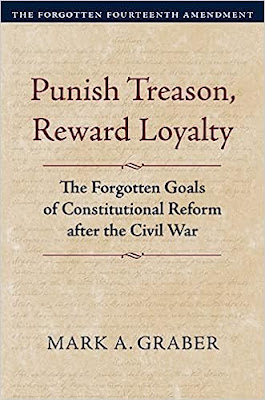
Mark A. Graber, Punish Treason, Reward Loyalty: The Forgotten Goals of Constitutional Reform after the Civil War (University of Kansas Press, 2023)
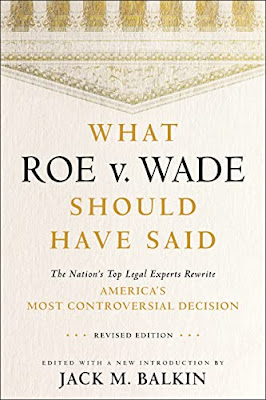
Jack M. Balkin, What Roe v. Wade Should Have Said: The Nation's Top Legal Experts Rewrite America's Most Controversial Decision - Revised Edition (NYU Press, 2023)

Andrew Koppelman, Burning Down the House: How Libertarian Philosophy Was Corrupted by Delusion and Greed (St. Martin’s Press, 2022)

Gerard N. Magliocca, Washington's Heir: The Life of Justice Bushrod Washington (Oxford University Press, 2022)
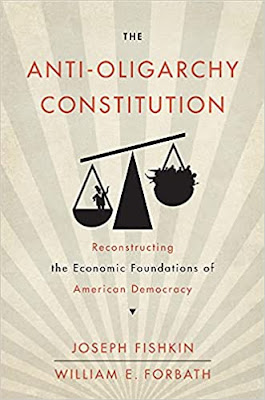
Joseph Fishkin and William E. Forbath, The Anti-Oligarchy Constitution: Reconstructing the Economic Foundations of American Democracy (Harvard University Press, 2022)
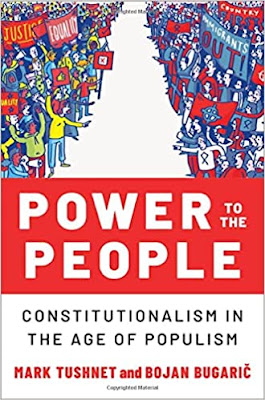
Mark Tushnet and Bojan Bugaric, Power to the People: Constitutionalism in the Age of Populism (Oxford University Press 2021).

Mark Philip Bradley and Mary L. Dudziak, eds., Making the Forever War: Marilyn B. Young on the Culture and Politics of American Militarism Culture and Politics in the Cold War and Beyond (University of Massachusetts Press, 2021).

Jack M. Balkin, What Obergefell v. Hodges Should Have Said: The Nation's Top Legal Experts Rewrite America's Same-Sex Marriage Decision (Yale University Press, 2020)

Frank Pasquale, New Laws of Robotics: Defending Human Expertise in the Age of AI (Belknap Press, 2020)

Jack M. Balkin, The Cycles of Constitutional Time (Oxford University Press, 2020)

Mark Tushnet, Taking Back the Constitution: Activist Judges and the Next Age of American Law (Yale University Press 2020).

Andrew Koppelman, Gay Rights vs. Religious Liberty?: The Unnecessary Conflict (Oxford University Press, 2020)

Ezekiel J Emanuel and Abbe R. Gluck, The Trillion Dollar Revolution: How the Affordable Care Act Transformed Politics, Law, and Health Care in America (PublicAffairs, 2020)

Linda C. McClain, Who's the Bigot?: Learning from Conflicts over Marriage and Civil Rights Law (Oxford University Press, 2020)
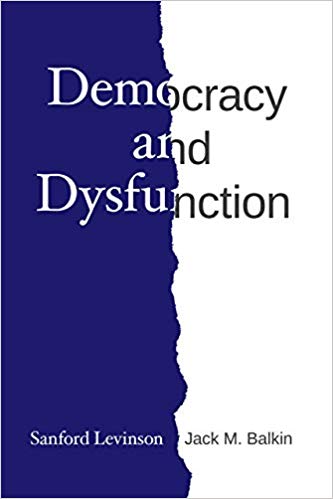
Sanford Levinson and Jack M. Balkin, Democracy and Dysfunction (University of Chicago Press, 2019)

Sanford Levinson, Written in Stone: Public Monuments in Changing Societies (Duke University Press 2018)

Mark A. Graber, Sanford Levinson, and Mark Tushnet, eds., Constitutional Democracy in Crisis? (Oxford University Press 2018)

Gerard Magliocca, The Heart of the Constitution: How the Bill of Rights became the Bill of Rights (Oxford University Press, 2018)

Cynthia Levinson and Sanford Levinson, Fault Lines in the Constitution: The Framers, Their Fights, and the Flaws that Affect Us Today (Peachtree Publishers, 2017)

Brian Z. Tamanaha, A Realistic Theory of Law (Cambridge University Press 2017)

Sanford Levinson, Nullification and Secession in Modern Constitutional Thought (University Press of Kansas 2016)

Sanford Levinson, An Argument Open to All: Reading The Federalist in the 21st Century (Yale University Press 2015)

Stephen M. Griffin, Broken Trust: Dysfunctional Government and Constitutional Reform (University Press of Kansas, 2015)

Frank Pasquale, The Black Box Society: The Secret Algorithms That Control Money and Information (Harvard University Press, 2015)

Bruce Ackerman, We the People, Volume 3: The Civil Rights Revolution (Harvard University Press, 2014)
Balkinization Symposium on We the People, Volume 3: The Civil Rights Revolution

Joseph Fishkin, Bottlenecks: A New Theory of Equal Opportunity (Oxford University Press, 2014)

Mark A. Graber, A New Introduction to American Constitutionalism (Oxford University Press, 2013)

John Mikhail, Elements of Moral Cognition: Rawls' Linguistic Analogy and the Cognitive Science of Moral and Legal Judgment (Cambridge University Press, 2013)

Gerard N. Magliocca, American Founding Son: John Bingham and the Invention of the Fourteenth Amendment (New York University Press, 2013)

Stephen M. Griffin, Long Wars and the Constitution (Harvard University Press, 2013)

Andrew Koppelman, The Tough Luck Constitution and the Assault on Health Care Reform (Oxford University Press, 2013)

James E. Fleming and Linda C. McClain, Ordered Liberty: Rights, Responsibilities, and Virtues (Harvard University Press, 2013)
Balkinization Symposium on Ordered Liberty: Rights, Responsibilities, and Virtues

Andrew Koppelman, Defending American Religious Neutrality (Harvard University Press, 2013)

Brian Z. Tamanaha, Failing Law Schools (University of Chicago Press, 2012)

Sanford Levinson, Framed: America's 51 Constitutions and the Crisis of Governance (Oxford University Press, 2012)

Linda C. McClain and Joanna L. Grossman, Gender Equality: Dimensions of Women's Equal Citizenship (Cambridge University Press, 2012)

Mary Dudziak, War Time: An Idea, Its History, Its Consequences (Oxford University Press, 2012)

Jack M. Balkin, Living Originalism (Harvard University Press, 2011)

Jason Mazzone, Copyfraud and Other Abuses of Intellectual Property Law (Stanford University Press, 2011)

Richard W. Garnett and Andrew Koppelman, First Amendment Stories, (Foundation Press 2011)

Jack M. Balkin, Constitutional Redemption: Political Faith in an Unjust World (Harvard University Press, 2011)

Gerard Magliocca, The Tragedy of William Jennings Bryan: Constitutional Law and the Politics of Backlash (Yale University Press, 2011)

Bernard Harcourt, The Illusion of Free Markets: Punishment and the Myth of Natural Order (Harvard University Press, 2010)

Bruce Ackerman, The Decline and Fall of the American Republic (Harvard University Press, 2010)
Balkinization Symposium on The Decline and Fall of the American Republic

Ian Ayres. Carrots and Sticks: Unlock the Power of Incentives to Get Things Done (Bantam Books, 2010)

Mark Tushnet, Why the Constitution Matters (Yale University Press 2010)
Ian Ayres and Barry Nalebuff: Lifecycle Investing: A New, Safe, and Audacious Way to Improve the Performance of Your Retirement Portfolio (Basic Books, 2010)
.jpg)
Jack M. Balkin, The Laws of Change: I Ching and the Philosophy of Life (2d Edition, Sybil Creek Press 2009)

Brian Z. Tamanaha, Beyond the Formalist-Realist Divide: The Role of Politics in Judging (Princeton University Press 2009)
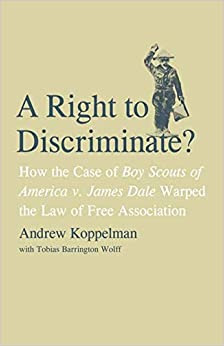
Andrew Koppelman and Tobias Barrington Wolff, A Right to Discriminate?: How the Case of Boy Scouts of America v. James Dale Warped the Law of Free Association (Yale University Press 2009)

Jack M. Balkin and Reva B. Siegel, The Constitution in 2020 (Oxford University Press 2009)
Heather K. Gerken, The Democracy Index: Why Our Election System Is Failing and How to Fix It (Princeton University Press 2009)

Mary Dudziak, Exporting American Dreams: Thurgood Marshall's African Journey (Oxford University Press 2008)

David Luban, Legal Ethics and Human Dignity (Cambridge Univ. Press 2007)

Ian Ayres, Super Crunchers: Why Thinking-By-Numbers is the New Way to be Smart (Bantam 2007)

Jack M. Balkin, James Grimmelmann, Eddan Katz, Nimrod Kozlovski, Shlomit Wagman and Tal Zarsky, eds., Cybercrime: Digital Cops in a Networked Environment (N.Y.U. Press 2007)
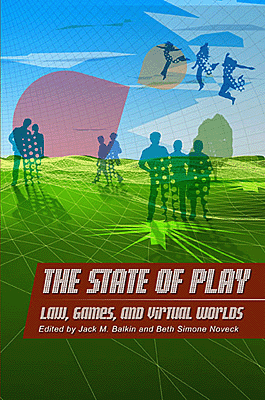
Jack M. Balkin and Beth Simone Noveck, The State of Play: Law, Games, and Virtual Worlds (N.Y.U. Press 2006)

Andrew Koppelman, Same Sex, Different States: When Same-Sex Marriages Cross State Lines (Yale University Press 2006)
Brian Tamanaha, Law as a Means to an End (Cambridge University Press 2006)
Sanford Levinson, Our Undemocratic Constitution (Oxford University Press 2006)
Mark Graber, Dred Scott and the Problem of Constitutional Evil (Cambridge University Press 2006)
Jack M. Balkin, ed., What Roe v. Wade Should Have Said (N.Y.U. Press 2005)
Sanford Levinson, ed., Torture: A Collection (Oxford University Press 2004)
Balkin.com homepage
Bibliography
Conlaw.net
Cultural Software
Writings
Opeds
The Information Society Project
BrownvBoard.com
Useful Links
Syllabi and Exams